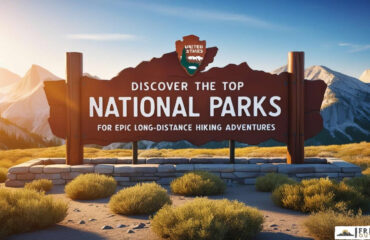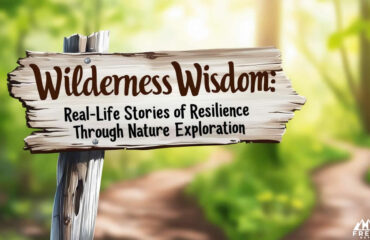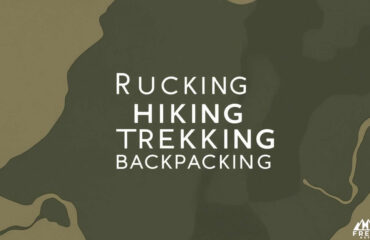
Discover how to navigate using natural landmarks, the sun, moon, and stars, enhancing your outdoor adventures and connection with nature.
Understanding the Art of Natural Navigation
Natural navigation is defined as the ability to find one’s way using environmental features, such as the sun, moon, stars, and terrestrial landmarks, instead of relying on modern technology. This ancient skill fosters a deeper connection with nature, as individuals learn to observe and interpret the signs around them. Engaging in natural navigation not only enhances outdoor experiences but also promotes confidence in wilderness exploration, allowing adventurers to feel more attuned to their surroundings.
Moreover, practicing natural navigation encourages mindfulness, making individuals more aware of their environment. When focused on the details of nature, such as the orientation of trees or the patterns of clouds, one develops a greater appreciation for the beauty and intricacies of the world. This connection can lead to enriching experiences, transforming a simple hike into a profound journey of discovery.
Techniques for Navigating by the Sun
One effective technique for navigating by the sun is the shadow stick method. By placing a stick vertically into the ground and marking the end of its shadow every 15 minutes, one can establish cardinal directions. The first mark indicates West, allowing for a basic framework to determine the other directions. This method is particularly useful during daylight, as the sun rises in the east and sets in the west, providing a reliable reference throughout the day.
Additionally, the sun’s position can reveal true south in the northern hemisphere at noon. Observing the angle of the sun at this time allows navigators to adjust their bearings accordingly. This technique, combined with the shadow stick method, can significantly enhance one’s ability to navigate effectively in outdoor settings.
Utilizing the Moon and Stars for Direction
The moon and stars are invaluable tools for natural navigation, especially at night. In the northern hemisphere, when the moon is in its crescent phase, one can draw an imaginary line from the moon’s horns down to the horizon to locate true south. For those navigating in the northern hemisphere, the North Star, or Polaris, serves as a fixed point in the sky that can be identified using the Ursa Major constellation. By drawing a line from the outer stars of the “Big Dipper” or “pan,” one can easily find north.
In the southern hemisphere, the Southern Cross constellation serves a similar purpose. When the cross is drawn, it points directly to true south, providing a reliable navigational aid for those exploring these regions. Utilizing celestial bodies not only aids in orientation but also connects individuals to the natural rhythms of the universe.
Observing Landmarks and Vegetation Patterns
Recognizable natural landmarks—like mountains, rivers, and unique trees—serve as reliable navigation aids. By familiarizing oneself with these features, one can navigate with greater confidence. For instance, moss growth patterns can indicate direction, as it typically grows on the north side of trees and rocks, helping adventurers find their way.
Moreover, tree growth patterns can also provide clues. In wooded areas, trees often have more leaves and branches on the side facing the equator, which can help in determining cardinal directions. Observing these natural indicators can significantly enhance one’s ability to navigate through dense forests or unfamiliar terrain.
Understanding Weather Patterns and Wind Directions
Weather patterns and prevailing winds are essential components of natural navigation. For instance, in regions where westerly winds prevail, one can observe the shapes of trees and vegetation, which tend to lean away from the direction of the wind, aiding in orientation. Additionally, understanding different cloud types can provide insights into weather conditions, which is critical for safe navigation.
Changes in temperature can also indicate approaching weather fronts, which may alter visibility and navigation conditions. By remaining aware of these elements, navigators can make more informed decisions and adapt their routes accordingly.
Starting Your Journey: Practical Tips for Beginners
For those new to natural navigation, it’s essential to start with safety in mind. Always inform someone of your hiking plans, including your destination, duration, and expected return. Practicing navigation in familiar areas is a great way to build confidence. Begin by identifying a specific point, marking directions, and engaging all five senses to enhance awareness.
Keeping a field journal can also be beneficial. Documenting observations and experiences while practicing navigation allows individuals to track their progress and improve their skills over time. Gradually expanding the distance walked from a familiar anchor point can help solidify navigation techniques and enhance memory of routes.
Overcoming Challenges in Natural Navigation
Natural navigation can present challenges, particularly due to seasonal changes that alter the appearance of landmarks. For instance, a familiar landscape may look different after the leaves fall in autumn or after a heavy snowfall. Navigators must remain flexible and adaptable, often relying on backup maps or GPS devices when natural features become indistinct.
Navigating featureless areas, such as flat plains or open fields, can also be daunting. In these situations, it is crucial to maintain heightened awareness and to use other senses, like hearing and smell, to discern direction. Practicing navigation in varying conditions will prepare individuals for these challenges and enhance their overall skills.
The Lasting Benefits of Mastering Natural Navigation
Mastering the art of natural navigation fosters a profound connection with the environment, enhancing observational skills and making outdoor adventures more fulfilling. These skills prepare individuals for emergencies when technology fails, providing confidence in wilderness exploration. Furthermore, learning to navigate by nature instills a sense of adventure and curiosity, motivating individuals to explore new terrains and environments.
Ultimately, natural navigation is not just about finding one’s way; it is about cultivating a relationship with the world around us. By developing these skills, individuals can embark on journeys that are not only adventurous but also deeply enriching, connecting them to the natural beauty of their surroundings.




